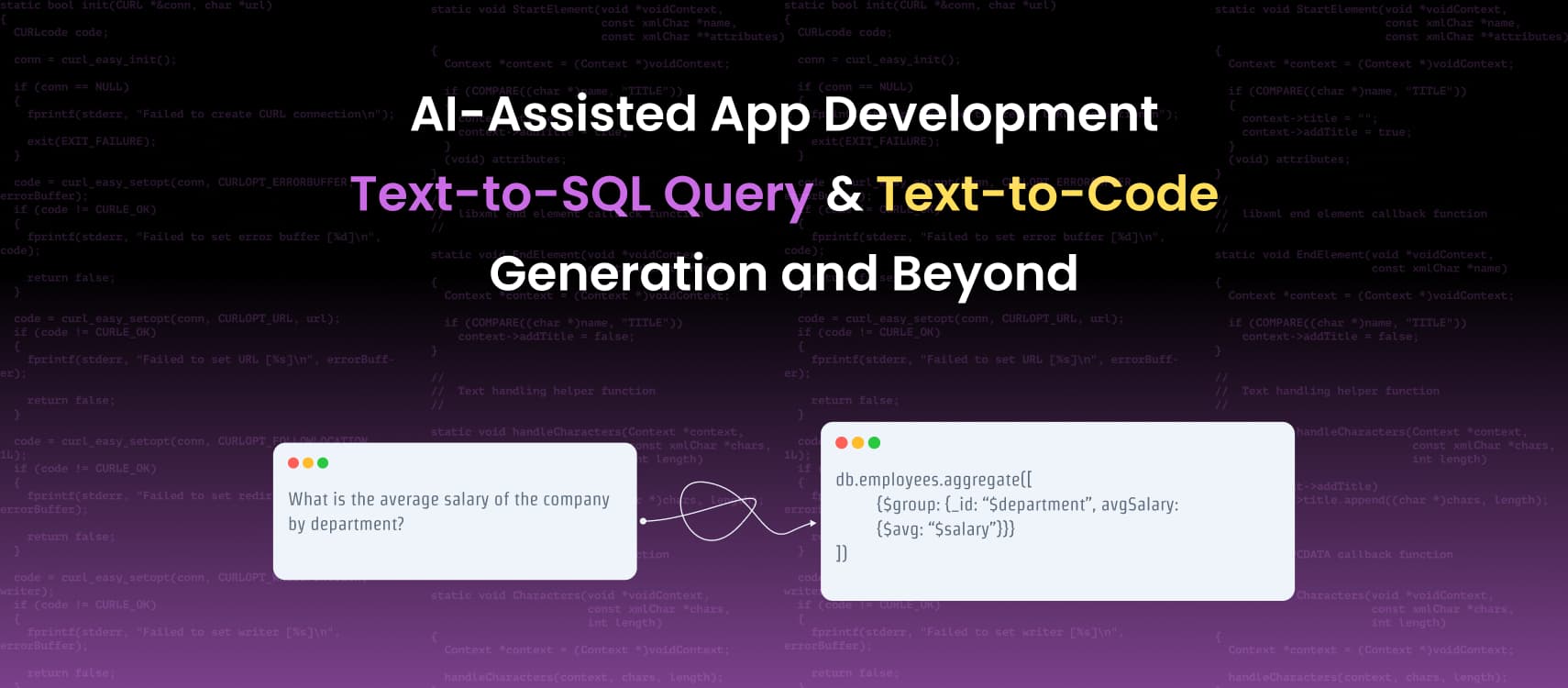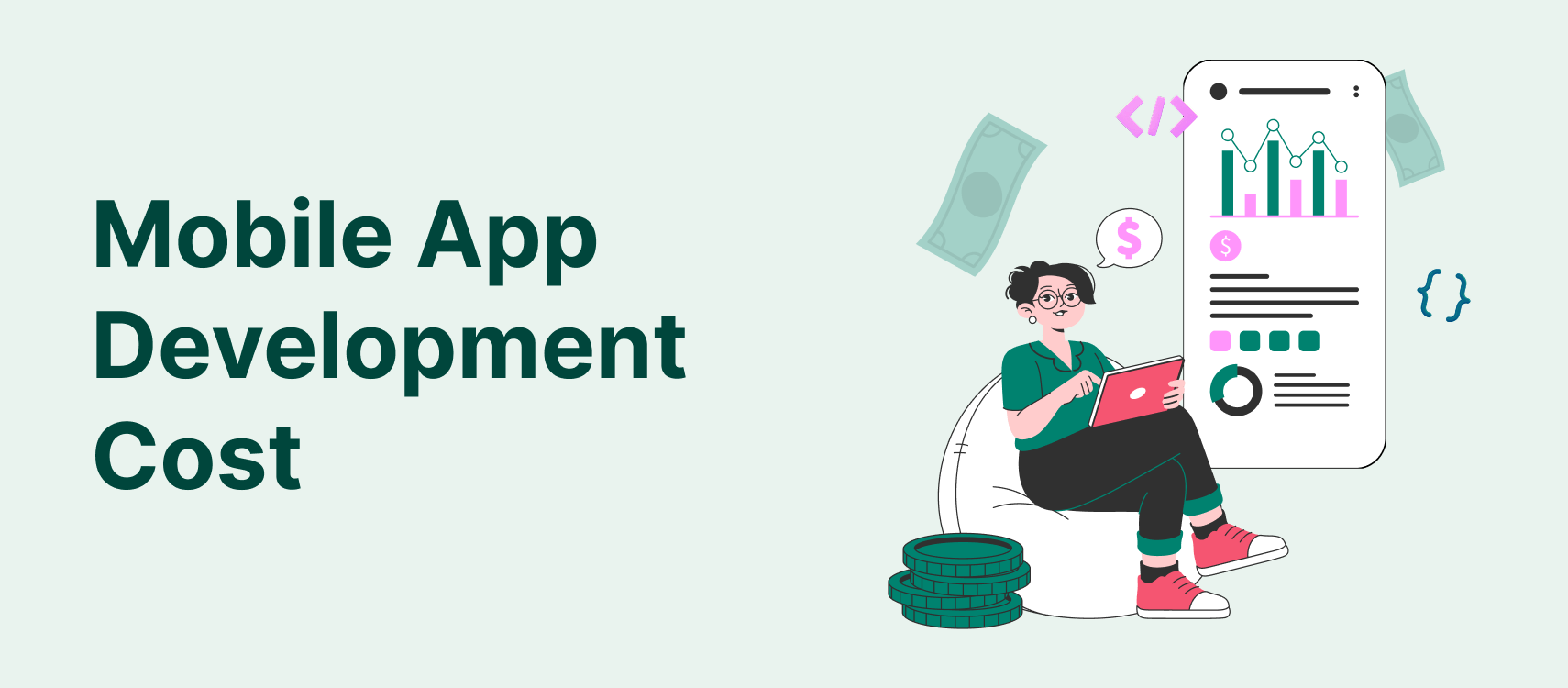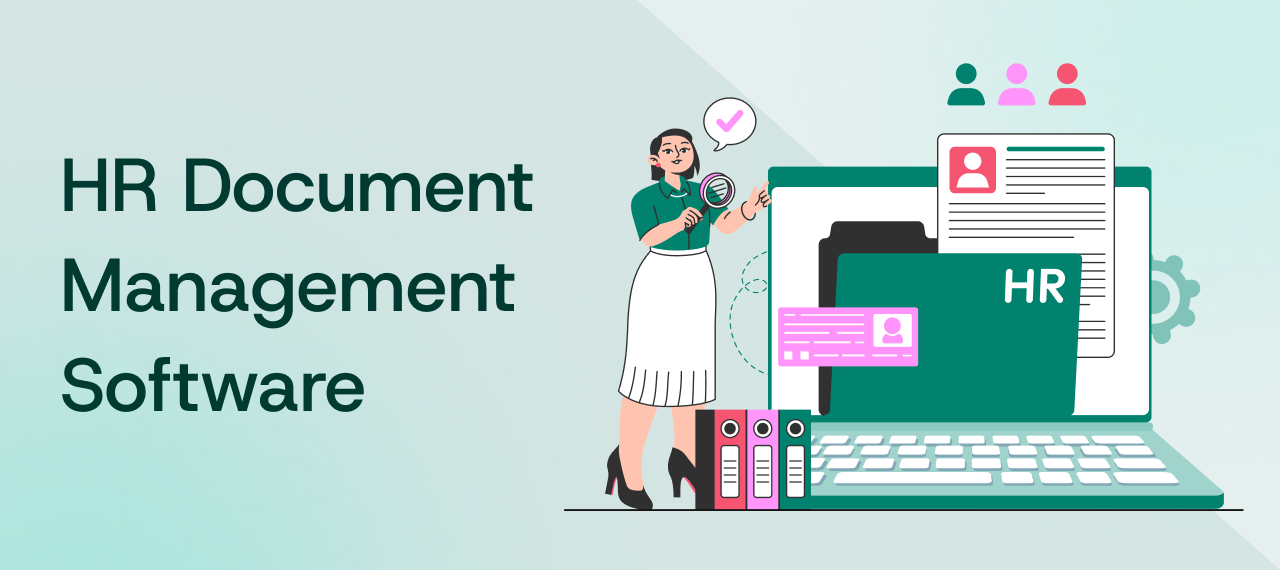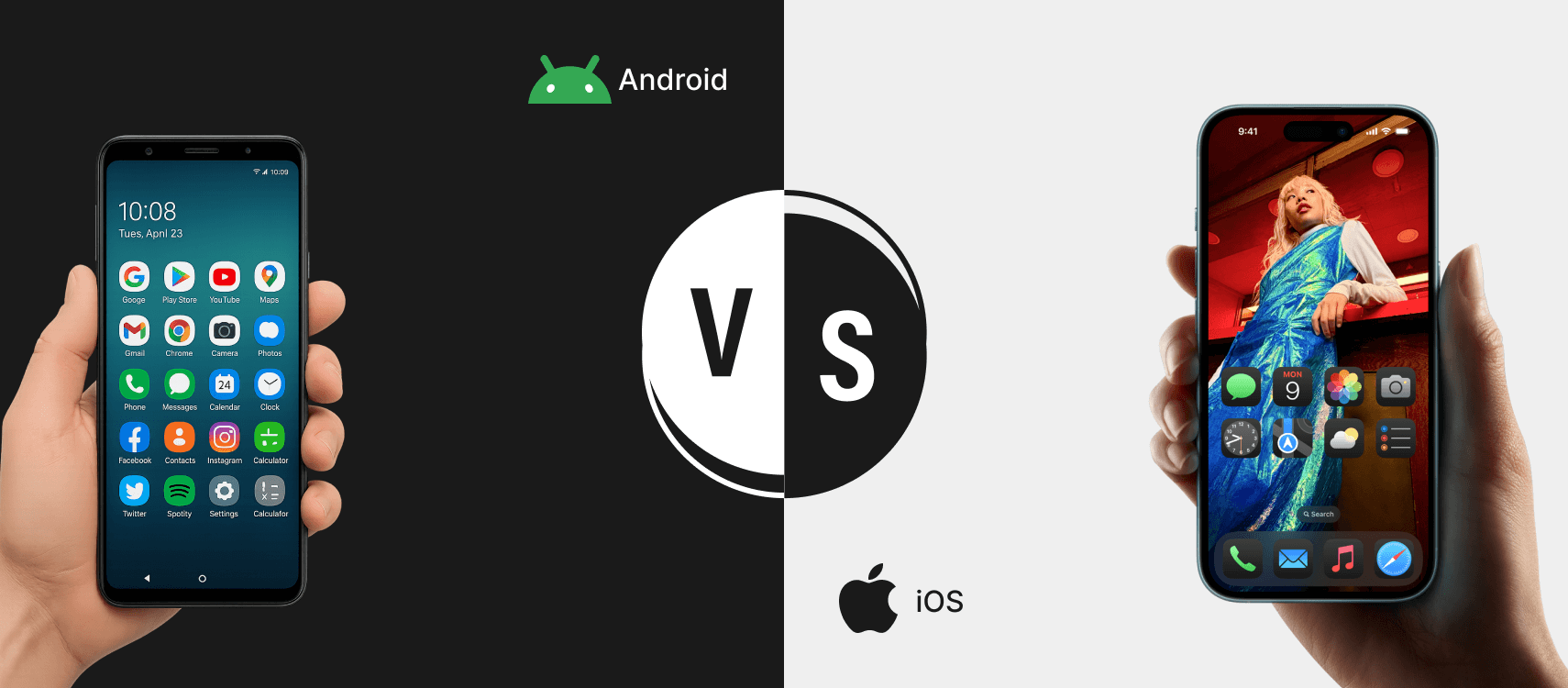Table of Contents
- Text-to-SQL Query Generation
- Text-to-Code Generation
- Challenges and Considerations
- AI-Assisted Development Future
- LLMs Tomorrow
- Summarising
The realm of app development has witnessed a revolutionary transformation with the integration of Artificial Intelligence (AI) into the development process. Traditional approaches to software development often involve a steep learning curve and require a deep understanding of programming languages and database structures. However,
AI-assisted app development has emerged as a game changer by enabling developers and non-developers alike to harness the power of natural language processing (NLP) to convert human-readable text into complex SQL queries and functional code snippets.
In this blog, we will explore Text-to-SQL query and Text-to-Code generation, and possibilities beyond.
Text-to-SQL Query Generation: Bridging the Gap Between Language and Databases
Text-to-SQL query generation is an AI-driven technology that allows developers and users to express database queries using natural language. It serves as a bridge between human communication and the structured world of databases, greatly simplifying the process of querying databases for relevant information. This technology is particularly valuable for non-technical users who may lack programming expertise but require access to the information stored in databases.
The underlying mechanism of Text-to-SQL query generation involves training machine learning models on large datasets containing pairs of natural language questions and their corresponding SQL queries. These models, often based on transformer architectures, learn the intricate mapping between linguistic patterns and database structures. As a result, users can now interact with databases using everyday language, without the need to master complex query languages like SQL.
One of the key benefits of Text-to-SQL query generation is its potential to democratize data access and empower a broader range of users. For instance, a marketing analyst seeking customer insights can effortlessly retrieve data by typing a query in plain English, eliminating the need to rely on a data engineer or write intricate SQL statements. This democratization of data has the potential to accelerate decision-making processes and foster a data-driven culture within organizations.
Text-to-Code Generation: Catalyzing Swift and Accurate Development
Text-to-Code generation, another facet of AI-assisted app development, holds the promise of accelerating software development by transforming natural language descriptions into functional code snippets. This technology is particularly advantageous for speeding up prototyping, reducing human errors, and bridging the communication gap between non-technical stakeholders and developers.
In the context of app development, Text-to-Code generation is a revolutionary tool. Developers can now write high-level descriptions of desired functionality, and the AI model can automatically generate the corresponding code. For instance, a developer can describe the layout and behavior of a user interface element, and the AI can produce the code that implements the described UI element.
This technology is not limited to a single programming language or framework. Through proper training and fine-tuning, AI models can generate code snippets in various languages and for different platforms. This flexibility greatly enhances the development process, as it allows developers to prototype and experiment with different codebases rapidly.
Challenges and Considerations
While Text-to-SQL query and Text-to-Code generation have the potential to revolutionize app development, they are not without challenges. One significant challenge is ensuring the accuracy and reliability of the generated output. In the case of Text-to-SQL queries, misinterpretations or errors could lead to incorrect data retrieval, impacting decision-making processes. Similarly, in Text-to-Code generation, inaccuracies could result in buggy or suboptimal code.
Addressing these challenges requires a combination of robust model training, rigorous testing, and continuous feedback loops. Models must be trained on diverse and representative datasets to handle a wide range of input variations. Furthermore, mechanisms for user feedback and model refinement are essential to iteratively improve the accuracy and reliability of generated queries and code.
Ethical considerations also play a pivotal role in the adoption of AI-assisted app development. As these technologies become more prevalent, it is essential to ensure that access to AI-generated functionalities is equitable and transparent. Related to bias in data, security of sensitive information, and unintended consequences of automation must be carefully addressed.
Read More: Frames in Artificial Intelligence
Beyond Text-to-SQL and Text-to-Code: The Future of AI-Assisted Development
The evolution of AI-assisted app development extends beyond Text-to-SQL query and Text-to-Code generation. Future advancements in this field hold the potential to unlock even more innovative capabilities.
One exciting direction is the integration of AI models with low-code and no-code development
Moreover, AI-assisted development could facilitate real-time collaboration between developers and AI models. Imagine a scenario where a developer and an AI model co-create code in a collaborative environment. The AI could provide instant feedback, suggest optimizations, and assist in debugging, thereby augmenting the developer’s capabilities and creativity.
Large Language Models (LLMS) Putting Things in Future Perspective
The advent of Large Language Models (LLMs) has introduced a transformative paradigm shift in software development. Powerful AI models applied in the field of software development offer a range of capabilities that can enhance productivity, creativity, and collaboration.
-
Code Generation and Refactoring:
One of the most significant ways LLMs are influencing software development is through code generation and refactoring. Developers can now draft code snippets or entire functions in natural language, and the LLM can translate these descriptions into functional code. This dramatically speeds up prototyping and reduces the time spent on mundane coding tasks.
-
Collaborative Coding and Knowledge Sharing:
In a collaborative software development environment, LLMs act as intelligent teammates. They can assist in writing documentation, providing context for code changes, and even participating in code reviews. Developers can communicate with LLMs in plain language to explain their code or seek guidance on solving specific programming challenges.
Summarising
AI-assisted app development, driven by Text-to-SQL query, Text-to-Code generation, and the latest LLMs, has redefined the landscape of software development. While challenges such as accuracy, reliability, and ethical considerations persist, the future holds immense promise for further advancements in AI-assisted development. As AI continues to evolve, it will undoubtedly play an increasingly integral role in shaping the way we build, innovate, and collaborate in the world of app development.










